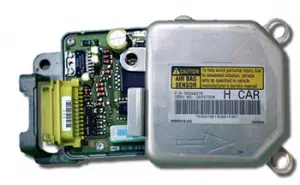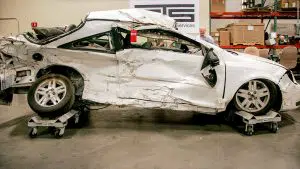We talked about black boxes in cars recently. This week I’ll be showing you some real-life stories where those black boxes were essential to solving real life cases.
In the 11th Willa Carson Mystery (7 novels and 5 exciting short reads for those times when you need a quick one!), NIGHT JUSTICE, Willa winds up in a dire situation after a serious car accident. With evidence mounting against her, the police pull her car’s black box to get data from it about the wreck.
Image courtesy of HarrisTechnical.com
Black boxes, also known as ‘event data recorders’, provide invaluable information when piecing together what happened in a crash. This is particularly important in vehicular homicide cases where reckless driving or negligence may be to blame. You can learn more about the history of black boxes here.
Black boxes can be used to prove whether drivers are at fault based on data.
This was the case in Texas, where a woman drove her vehicle through a post office window and killed a person inside. The woman blamed her car for the crash, saying that it accelerated on its own. Investigators were able to refute the claim after retrieving data from the car’s black box, leading to a successful wrongful-death suit.
In a similar case in 2001 a Canadian driver struck a vehicle, killing the other driver. Despite claims that the deceased driver was at fault, the other driver was found responsible due to information collected from his black box. The data showed that seconds before the crash, the man at fault had been driving 80 mph in a 50 mph zone. He was sentenced to eighteen months in jail for dangerous driving causing death.
Black boxes can also be used to prove a suspect’s innocence.
This was the case with a multi-vehicle crash that occurred in Ontario, Canada. One of the drivers was initially suspected of speeding due to witness reports. After an inspection of the driver’s black box, however, it was revealed that he was not responsible for the crash. In another case in Georgia, a black box revealed that the driver was not at fault for causing a crash, but rather it was the vehicle that had a defective ignition switch.
Image courtesy of CNNbusiness.com
Like all technology, black boxes can have technical faults which may result in false information.
This was made apparent in a popular case in 2004 involving Maine Gov. John Baldacci. While the Governor and other occupants in the vehicle claimed they were going 55 mph right before the crash, the SUV’s black box indicated the vehicle was traveling 71 mph.
Another discrepancy was that the black box also indicated the governor was not wearing his seatbelt, even though everyone in the car disputed this. Medical personnel said the governer’s injuries confirmed that he was wearing a seatbelt.
Cases such as these demonstrate that investigators should not rely solely on data collected from black boxes. After all, as Judge Willa Carson knows, the data collected from these devices can have powerful consequences.
To keep up with my books that follow Judge Willa Carson and the technological dangers that accompany her search for justice, CLICK HERE. Buy Night Justice HERE.







Comments are closed.